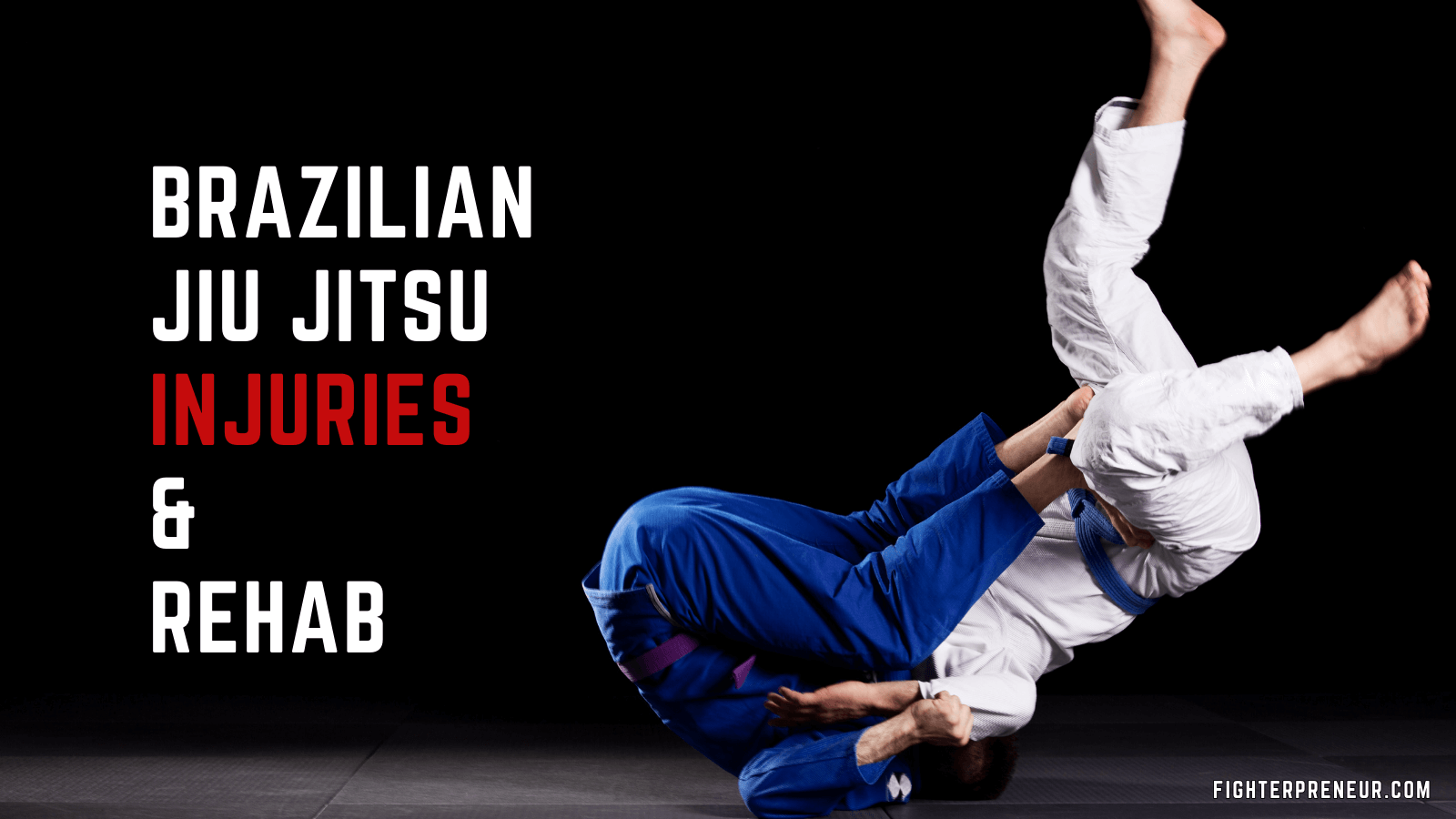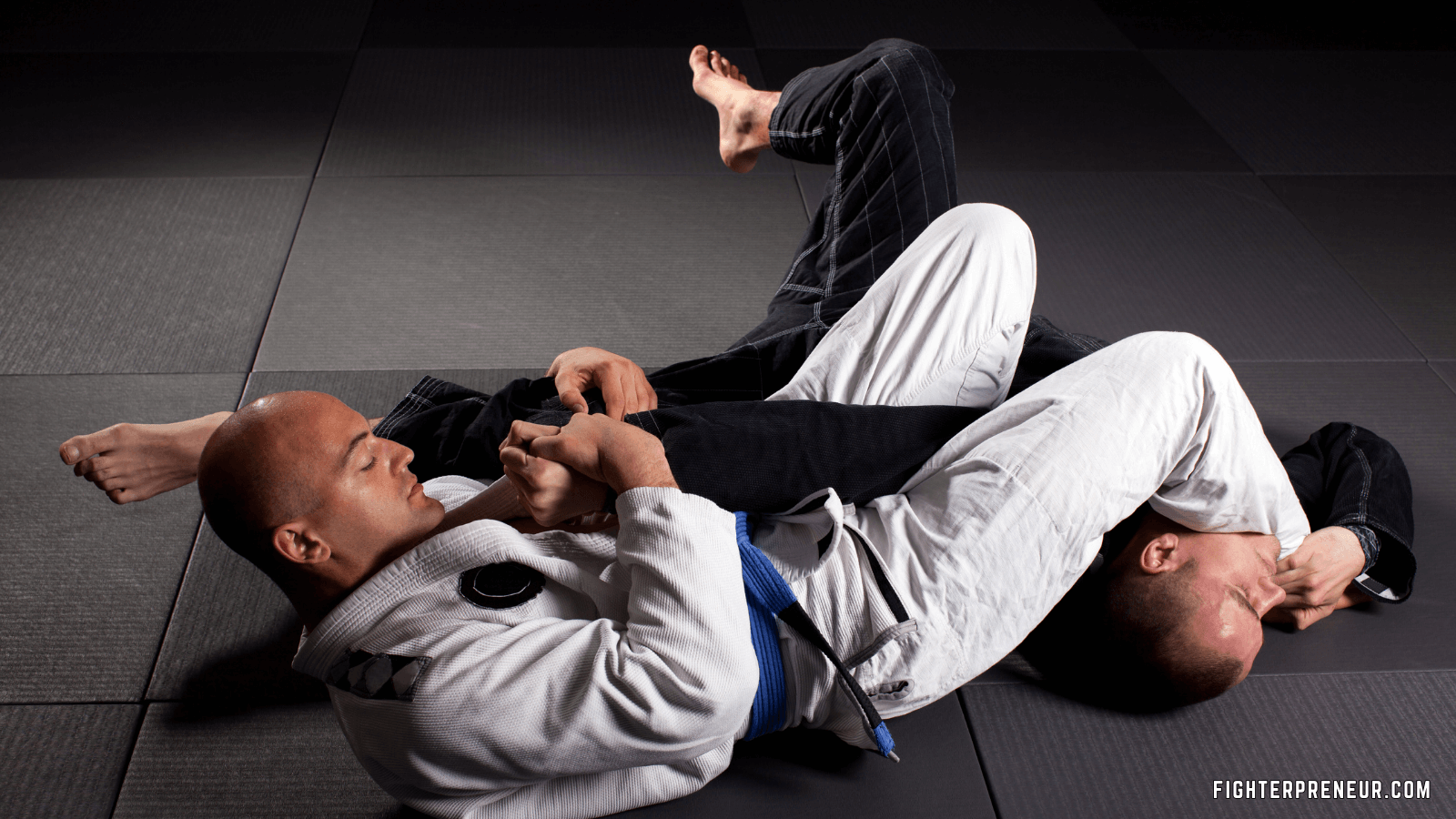
Table of Contents
Subscribe & Get Yours Goal Setting Template for 2024
Most Common Injuries In Brazilian Jiu-Jitsu and Its Recovery
Brazilian Jiu-Jitsu (BJJ) is the best self-defense art and skillful sport. It involves techniques, discipline, and physical strength. But, like any physically demanding activity, BJJ can lead to injuries. Furthermore, we’ll talk about the common injuries in BJJ, why they happen, and how to get better, whether you’re new to BJJ.
This article will give you helpful information to handle BJJ injuries better and feel more confident.
Does Brazilian Jiu-Jitsu lead to injuries?
Yes, Brazilian Jiu-Jitsu (BJJ) can lead to injuries. Due to its physical nature and grappling techniques, there’s a risk of various injuries, such as sprains, strains, and joint dislocations. However, with proper training techniques, safety precautions, and awareness of one’s body, these risks can be minimized, allowing practitioners to enjoy the benefits of BJJ while reducing the likelihood of injuries.

Common BJJ Injuries: An Overview
The Mechanics of Sprains and Strains
Sprains and strains happen when your joints and muscles get stretched or twisted too much. In Brazilian Jiu-Jitsu, these injuries often affect parts like your elbows, knees, and shoulders because of all the bending and moving. It can be painful but usually not too serious. Rest and ice can help them heal, and you’ll be back on the mat soon!
Mat Burns and Bruises
Mat burns and bruises are like little badges of honor in Brazilian Jiu-Jitsu. They happen because of all the sliding and rolling on the training mats. While they might sting a bit, they show you’re dedicated to your practice. These marks are a part of the BJJ journey and remind you of your hard work and commitment. Just a little care and they’ll heal, but they’ll always tell your BJJ story
Dislocations of joint
During Brazilian Jiu-Jitsu, joints like your shoulder or elbow can sometimes get twisted in ways they shouldn’t. This can be painful and needs immediate attention. When a joint dislocates, it comes out of its usual place. But the good news is that a trained person can usually put it back in, like a doctor or a BJJ instructor. Then, with some rest and care, you can return to training and rolling on the mat.

Sudden Fractures during BJJ
Sudden fractures during Brazilian Jiu-Jitsu (BJJ) are uncommon but can happen when a quick, vital force is applied to a bone. This force can cause the bone to break. It’s important to know that BJJ is generally safe, and fractures are rare. If a fracture does occur, it’s crucial to stop training immediately and seek medical help. Treating fractures usually involves wearing a cast or having surgery, depending on the severity. While fractures may sound scary, remember that they are infrequent in BJJ, and with proper care, most people can recover and return to the sport they love.
The Art of BJJ Recovery
Rest and Ice
The prescription is straightforward for minor injuries like sprains, strains, and bruises: rest and ice. Delve into the science behind this age-old remedy and learn how to apply it effectively to expedite your healing journey.
Physical Therapy
When confronting more severe injuries, the role of a physical therapist becomes paramount. Uncover how these skilled professionals design personalized rehabilitation plans to rebuild your strength, mobility, and confidence.
Immobilization
In cases of dislocations and fractures, immobilization is often the initial approach. Explore the nuances of immobilization, such as wearing a cast, brace, or sling, and understand its significance in your recovery.
Surgical Intervention
For the most severe injuries, surgical intervention may be the only option. Delve into the world of surgery as a last resort, where skilled surgeons repair damaged ligaments, tendons, or bones to set you on the path to full recovery.
Techniques to avoid injuries
Warm-Up and Stretch
Before diving into Brazilian Jiu-Jitsu (BJJ), it’s super important to warm up and stretch your body. Think of it like getting your muscles and joints ready for action. Warming up helps prevent injuries and makes your body more flexible. Simple exercises like jogging in place or doing light stretches can do wonders. It’s like giving your car’s engine a few minutes to rev up before hitting the road. So, remember to warm up and stretch before your BJJ session—it’s an intelligent way to stay safe and enjoy your training to the fullest.
Mentally Presence
Training your brain to avoid injuries in Brazilian Jiu-Jitsu (BJJ) is as important as training your body. It’s about knowing your limits and recognizing when to stop or tap out during practice. Your brain can help you understand the techniques better and move in ways that reduce the risk of getting hurt. Paying attention to how your body feels and communicating with your training partners can make BJJ safer for yourself and others. So, keep your brain engaged, stay mindful, and train smart to prevent injuries on the mat.
Effective training
Effective training in Brazilian Jiu-Jitsu (BJJ) is critical to avoiding injuries. It starts with proper technique and practicing it consistently. Learning how to move correctly not only helps you succeed but also keeps you safe. Listening to your body is crucial; pausing and reassessing is okay if something doesn’t feel right.
Right custom wearing

To stay safe and avoid injuries in Brazilian Jiu-Jitsu (BJJ), what you wear matters. A proper BJJ gi, the uniform used in BJJ, is essential. It’s designed to be durable and hard to grip, making it less likely for your opponent to get a hold of you in a way that can lead to injuries. Also, consider wearing rash guards and spats underneath your gi to protect your skin from mat burns and bruises. Also, remember a mouth guard, which shields your teeth during intense sparring. By wearing the right gear, you can reduce the risk of injuries and focus more on your BJJ techniques.

